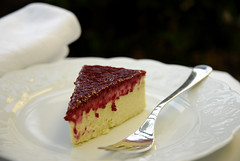 I’ve learned that converting cacao seeds into chocolate is a complex and time-consuming process. To begin, chocolate manufacturers keep careful track of each cacao shipment they receive. They sort the seeds according to type and country of origin. Next, the seeds pass through a cleaning machine and are weighed so they can be blended according to special formulas created by each manufacturer. Some candy bars contain up to 12 different types of seeds! Then, large, rotating ovens roast the seeds at temperatures of 250°F or more to release the rich aromas and delicious taste. As the seeds toss about in the oven, they lose much of their moisture, turning into a deep brown color, similar to coffee beans. Once the seeds have cooled, a machine crack opens the thin shells to get at the seeds and giant fans blow away these empty husks.
I’ve learned that converting cacao seeds into chocolate is a complex and time-consuming process. To begin, chocolate manufacturers keep careful track of each cacao shipment they receive. They sort the seeds according to type and country of origin. Next, the seeds pass through a cleaning machine and are weighed so they can be blended according to special formulas created by each manufacturer. Some candy bars contain up to 12 different types of seeds! Then, large, rotating ovens roast the seeds at temperatures of 250°F or more to release the rich aromas and delicious taste. As the seeds toss about in the oven, they lose much of their moisture, turning into a deep brown color, similar to coffee beans. Once the seeds have cooled, a machine crack opens the thin shells to get at the seeds and giant fans blow away these empty husks. Next, the broken seed bits, called nibs, pass through a series of sieves, which strain and sort the nibs according to size. The nibs themselves are made up of 53% cocoa butter and 47% pure cocoa solids. To separate these two substances the nibs are milled and liquefied into a thick paste, called chocolate liquor, then some of the chocolate liquor is placed in a huge hydraulic press that squeezes out the cocoa butter. This fatty, yellow substance can be added to dark or milk chocolates, used as the basis for white chocolate, or in cosmetics and medicine. Once cocoa butter is extracted, the remaining solid cocoa is pulverized into cocoa powder—the product used in beverages, cooking, and baking.
 Manufacturers blend unpressed liquor with condensed milk, sugar, and extra cocoa butter to form chocolate. The extra cocoa butter keeps the chocolate solid at room temperature. The raw mixture of milk, liquor, sugar, and cocoa butter is churned until it becomes a coarse, brown powder called “crumb.” The chocolate crumb mixture goes through a series of steel rollers breaking down the tiny particles of milk, cocoa, and sugar within the crumb. In general, Swiss and German chocolates are refined for a longer period, making them smoother and finer than American or English candy. The refined chocolate paste is poured into a vat in which a large heavy roller kneads, blends, and grinds the mixture. Agitating this paste smoothes out the sugar grains to give the chocolate a silky texture. Aerating the paste allows acids and moisture to evaporate, which creates a mellower, more well-rounded flavor. This process can take up to six days to complete! Finally, the refined chocolate is cooled and warmed repeatedly in a process called “tempering” that gives chocolate its glossy sheen, and ensures that it will melt properly.
Manufacturers blend unpressed liquor with condensed milk, sugar, and extra cocoa butter to form chocolate. The extra cocoa butter keeps the chocolate solid at room temperature. The raw mixture of milk, liquor, sugar, and cocoa butter is churned until it becomes a coarse, brown powder called “crumb.” The chocolate crumb mixture goes through a series of steel rollers breaking down the tiny particles of milk, cocoa, and sugar within the crumb. In general, Swiss and German chocolates are refined for a longer period, making them smoother and finer than American or English candy. The refined chocolate paste is poured into a vat in which a large heavy roller kneads, blends, and grinds the mixture. Agitating this paste smoothes out the sugar grains to give the chocolate a silky texture. Aerating the paste allows acids and moisture to evaporate, which creates a mellower, more well-rounded flavor. This process can take up to six days to complete! Finally, the refined chocolate is cooled and warmed repeatedly in a process called “tempering” that gives chocolate its glossy sheen, and ensures that it will melt properly.





No comments:
Post a Comment